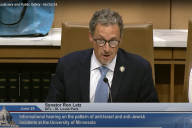You have /5 articles left.
Sign up for a free account or log in.
The ACUPCC requires schools to report some Scope 3 (external) emissions as part of their greenhouse gas inventories. Most other organizations that require GHG inventories stop at Scope 1 or, at most, Scope 2. There are good reasons why the PCC asks for at least some Scope 3 emissions, however.
First, there's a logical case that a school or similar institution should take responsibility for the full increase in global emissions which results from its existence and operation. Scope 3 emissions like commuting and air travel wouldn't occur if the school didn't exist, or operated in a completely different manner (think "online only"). That isn't to say that colleges and universities should have only online operations, or that if staff weren't commuting to campus they wouldn't be commuting somewhere else, instead. But there's no sense worrying about scenarios which are clearly counterfactual. We have enough on our plate in the real world.
Second, including Scope 3 emissions helps break down any barrier between the college and the community. A university's commuting emissions, for example, may be external to the institution, but most of them aren't external to the town or city. And it's hard to create a sustainable campus in an unsustainable city. Hard, in the sense of "impossible."
But perhaps most important, there's also a moral hazard that's introduced if a school gets a free pass on Scope 3 emissions. Many Scope 1 emissions can become Scope 3 by the simple expedient of contracting out a particular campus function. Too many emissions from your campus shuttle service? Sell the buses and contract out the shuttle provision. Too many emissions from heating your buildings? Wrap a sale/repurchase agreement around an operating lease for your heating plant, and what was Scope 1 becomes Scope 3. Too many emissions from food preparation and waste disposal? Contract out dining services and lease the premises to the contractor (then rent them back); problem solved.
Now each of these examples is pretty obviously fraudulent -- if you did something like this to manipulate your financial statement, your auditor might have a fit. (Although I'm not sure the government regulators would even notice.) But GHG inventories under the PCC and most other schemes aren't audited. What you report is what gets accepted. Since reporting is voluntary, this makes a certain degree of sense -- if an institution weren't going to be serious about its inventory, that school probably wouldn't sign up in the first place. But with "green" ratings gaining increased prominence in admissions guides and such, I don't know how long we can count on good intentions to keep everyone honest. (Many schools have fudged other ranking criteria for years.) So keeping at least a good portion of external emissions within the boundaries of the inventory makes a great deal of sense. And emissions from any function which ever was internal (Scope 1) should probably always remain in-bounds.





